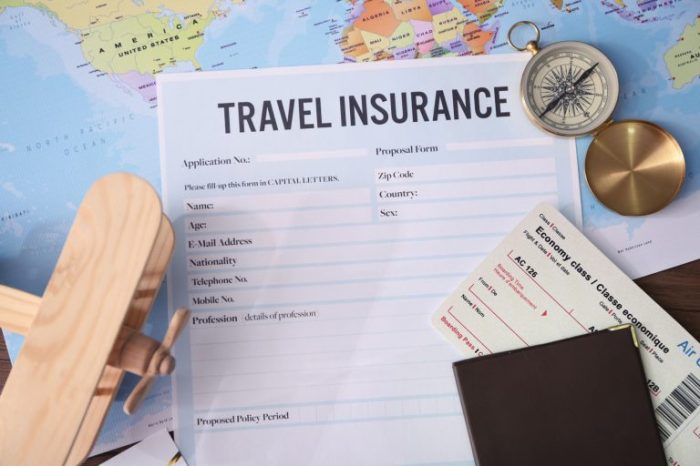Venturing into the realm of travel insurance policies can be akin to navigating a labyrinthine maze. Yet, with the right guidance, you can emerge unscathed, armed with a thorough understanding of the intricate clauses that govern your coverage. Join us as we embark on a journey through the fine print, deciphering its complexities and empowering you to make informed decisions about your travel insurance.
In this comprehensive guide, we’ll illuminate the essential elements of coverage, guiding you through the nuances of exclusions and limitations. We’ll unravel the mysteries of the claim process, providing insights into documentation requirements and assessment timelines. By the end of this expedition, you’ll possess the knowledge and confidence to navigate the fine print with ease, ensuring your travels are protected against unforeseen circumstances.
Understanding the Coverage

Thoroughly reviewing the coverage details of your travel insurance policy is crucial to ensure you understand the extent of your protection. This includes comprehending what is covered, any exclusions or limitations, and the specific terms and conditions that apply.
Essential coverage elements to look for include medical expenses, trip cancellation or interruption, baggage loss or damage, and emergency assistance. It’s equally important to be aware of any exclusions, such as pre-existing medical conditions or high-risk activities, and any limitations, such as coverage limits or deductibles.
Essential Coverage Elements
- Medical expenses: Coverage for medical treatment, hospitalization, and emergency medical evacuation.
- Trip cancellation or interruption: Reimbursement for non-refundable trip costs if you must cancel or interrupt your trip due to covered reasons, such as illness, injury, or family emergencies.
- Baggage loss or damage: Coverage for lost, stolen, or damaged baggage and personal belongings.
- Emergency assistance: Access to 24/7 support for emergencies, including medical assistance, legal advice, and travel arrangements.
Exclusions and Limitations
Exclusions are specific events or circumstances that are not covered by the policy. Common exclusions include pre-existing medical conditions, high-risk activities, and acts of war or terrorism. Limitations refer to the maximum amount of coverage provided or the specific conditions under which coverage applies.
- Pre-existing medical conditions: Coverage may not apply to medical expenses related to pre-existing conditions unless they are specifically covered by the policy.
- High-risk activities: Coverage may not apply to injuries or accidents resulting from high-risk activities, such as skydiving or bungee jumping.
- Acts of war or terrorism: Coverage may not apply to events or circumstances related to acts of war or terrorism.
- Coverage limits: Policies may have limits on the amount of coverage provided for medical expenses, trip cancellation, or baggage loss.
- Deductibles: Deductibles are the amount you must pay out-of-pocket before coverage kicks in.
Claim Process and Procedures
Filing a claim after an unexpected event during your travels can be a daunting task. To ensure a smooth and efficient process, it’s crucial to understand the steps involved, the documentation required, and the claims assessment timeline.
Steps in Filing a Claim
- Contact Your Insurer:As soon as possible after the incident, notify your travel insurance provider by phone, email, or through their online portal.
- Provide Essential Details:Clearly state the nature of the claim, the date and location of the incident, and any other relevant information.
- Submit the Claim Form:Most insurers provide a standardized claim form that requires you to provide detailed information about the incident, your policy details, and the expenses incurred.
- Gather Supporting Documents:To support your claim, you will need to provide documentation such as medical bills, receipts for expenses, and police reports (if applicable).
- Submit the Claim:Once you have gathered all the necessary documentation, submit your claim form and supporting documents to your insurer.
Documentation Required
The specific documentation required for your claim will vary depending on the nature of the incident. However, some common documents include:
- Medical records and bills
- Receipts for travel expenses (e.g., flights, accommodation, transportation)
- Police reports (in case of theft, lost luggage, or other incidents)
- Travel itinerary and documentation
Claims Assessment Process and Timeline
Once your claim is submitted, the insurer will assess its validity and determine the amount of coverage you are entitled to. This process typically involves reviewing your policy, verifying the documentation provided, and potentially conducting further investigations.
The timeline for claims assessment varies depending on the complexity of the claim and the insurer’s processing time. Generally, you can expect to receive a decision within a few weeks to several months.
Fine Print Analysis
Scrutinizing the fine print of your travel insurance policy is crucial to fully comprehend the coverage you’re entitled to. Understanding key clauses and terms can help you avoid potential pitfalls and ensure you’re adequately protected during your travels.
Key Clauses and Terms
Pay attention to the following key clauses and terms that can significantly impact your coverage:
- Covered Events:Clearly define the specific events or circumstances that trigger coverage under the policy.
- Exclusions:List the events or situations that are not covered by the policy, such as pre-existing medical conditions or high-risk activities.
- Policy Period:Specifies the duration of coverage, from the policy’s effective date to its expiration date.
- Territorial Limits:Artikels the geographical areas where the policy provides coverage.
- Subrogation:A clause that allows the insurance company to seek reimbursement from a third party responsible for your loss.
Importance of Understanding Deductibles, Co-Pays, and Maximum Benefits
Deductibles, co-pays, and maximum benefits are essential factors to consider when evaluating your travel insurance policy:
- Deductible:The amount you pay out-of-pocket before the insurance company begins to cover expenses.
- Co-pay:A fixed amount you pay towards certain medical expenses, such as doctor visits or prescriptions.
- Maximum Benefits:The maximum amount the insurance company will pay for specific covered expenses, such as medical expenses or trip cancellation costs.
Understanding these terms ensures you have a clear understanding of your financial responsibilities and the limits of your coverage.
Interpreting Policy Language
Policy language can be complex and technical. To avoid misunderstandings, consider the following tips:
- Read carefully:Take the time to thoroughly read and understand the policy document.
- Clarify unfamiliar terms:Research or consult with an insurance professional to clarify any unfamiliar terms or concepts.
- Seek professional advice:If you have any doubts or concerns, consider consulting with an insurance agent or broker.
By carefully analyzing the fine print and understanding key terms and conditions, you can ensure you have a travel insurance policy that meets your needs and provides the necessary protection during your travels.
Comparison and Evaluation

Selecting the most suitable travel insurance policy requires a thorough comparison and evaluation of available options. Consider the following factors:
Coverage
Assess the coverage provided by each policy. Ensure it aligns with your specific travel plans, including destinations, activities, and potential risks.
Premiums
Compare the premiums charged by different insurers. Consider the coverage offered in relation to the cost to determine the best value for your money.
Customer Service
Research the customer service reputation of each insurer. Positive feedback indicates a company’s commitment to providing prompt and helpful assistance when needed.
Tips for Evaluating Policies
- Read the policy documents carefully to understand the terms and conditions.
- Compare policies side-by-side using a comparison tool or spreadsheet.
- Consider your individual needs and preferences when selecting coverage.
- Contact the insurers directly to clarify any questions or concerns.
Special Considerations

Understanding the unique requirements of different travel scenarios is crucial when selecting travel insurance. Adventure activities and international travel pose specific challenges that require tailored coverage.
Consider the following aspects when customizing your policy:
Adventure Activities
- Adventure activities often carry inherent risks. Ensure your policy covers specific activities you plan to engage in, such as scuba diving, rock climbing, or skiing.
- Opt for policies that provide adequate medical coverage, emergency evacuation, and search and rescue expenses.
International Travel
- International travel involves navigating unfamiliar healthcare systems and potential language barriers. Choose a policy that offers comprehensive medical coverage, including emergency medical evacuation.
- Consider coverage for trip delays, lost luggage, and other inconveniences that may arise during international travel.
Closing Notes

As you venture forth, remember that understanding the terms and conditions of your travel insurance policy is not merely a box-ticking exercise; it’s an investment in peace of mind. By embracing the knowledge imparted in this guide, you’ll be equipped to make informed decisions, ensuring that your travels are not only adventurous but also well-protected.
May your journeys be filled with unforgettable experiences and the assurance that you’re covered every step of the way.
